Marketing pioneer John Wanamakeronce said, "Half the money I spend on advertising is wasted; the trouble is I don’t know which half."

The same is true for sales reps. There isn't a one size fits all approach to closing deals and that makes it tough to determine what's working and what's not.
Without tracking sales and pipeline activity on an individual and company-wide level, it’s nearly impossible for sales leaders to pinpoint weak areas. Measuring metrics is often placed on the back burner with sales leaders preferring to execute than analyze. But metrics are a crucial part of keeping a pulse on your sales efforts.
In this post, we give you the most important inside sales metrics you should be tracking this quarter.
Inside Sales Metrics
- Call to Connect Ratio
- Lead to Opportunity Ratio
- Opportunity to Deal Ratio
- Call to Deal Ratio
- Pipeline Stage Conversions
- Quarter to Quarter Pipeline Growth
- Inflow/Outflow of Opportunities
- Pipeline Coverage Ratio
- Average Days per Sale for Won or Lost Opportunities
- Quota Attainment
- Quarter to Quarter Sales Growth vs. Pipeline Growth
- Sales Cycle Length
- Average Deal Size
- Forecast Accuracy
Sales Activity Metrics
1. Call to Connect Ratio
A sales rep's call to connect ratio is one of the most important KPIs inside sales professionals need to consider. It divides the number of calls answered by the number of calls placed.
It allows you to identify whether reps are struggling right out of the gate, so you can help guide them in that stage if need be. It also provides a snapshot of a rep's productivity — a factor more telling of a rep's skill set than call volume.
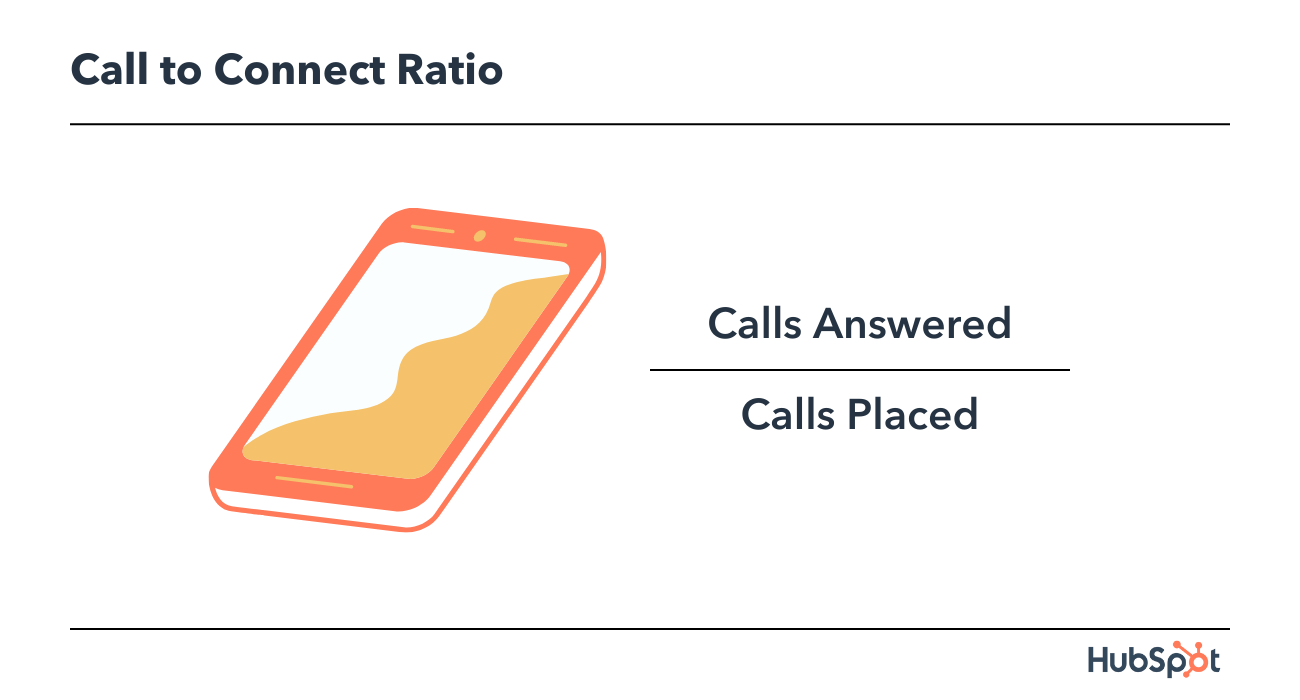
How to Improve Call to Connect Ratio:
Let's face it, spam calls are out of control and prospects are taking precautions to avoid these relentless sales tactics. About 80% of Americans have opted out of answering their phones to unfamiliar numbers, and that can mean bad news for your sales team's call-to-connect ratio.
One way to earn the prospect's trust is to dial from a familiar area code. There's a higher likelihood that they'll pick up since spam callers won't always make this extra effort. Once you do have your prospect on the line, greet them by name to reassure them that your call is legitimate.
2. Lead to Opportunity Ratio
Lead to opportunity ratio is another important efficiency metric. It tracks the number of leads that become opportunities.
The lead to opportunity ratio allows you to gauge reps' strengths and weaknesses, providing you with the insight necessary to identify which members of your team need more coaching and guidance. Also, if you're finding your lead to opportunity ratio is lacking across the board, you'll know you need to reevaluate your sales process as a whole.
How to Improve Lead to Connect Ratio:
To improve your lead to connect ratio, take a look at how you're qualifying leads. You want to optimize those that are interested in your product and have a well-defined need for it. By prioritizing leads who most closely meet the criteria of a customer, you'll find that you're able to convert more leads quickly.
3. Opportunity to Deal Ratio
This sales metric compares the number of deals won to the number of deals lost. The opportunity to deal ratio gives you a long-term snapshot of how successful your team is at closing deals given the number of leads they were given.
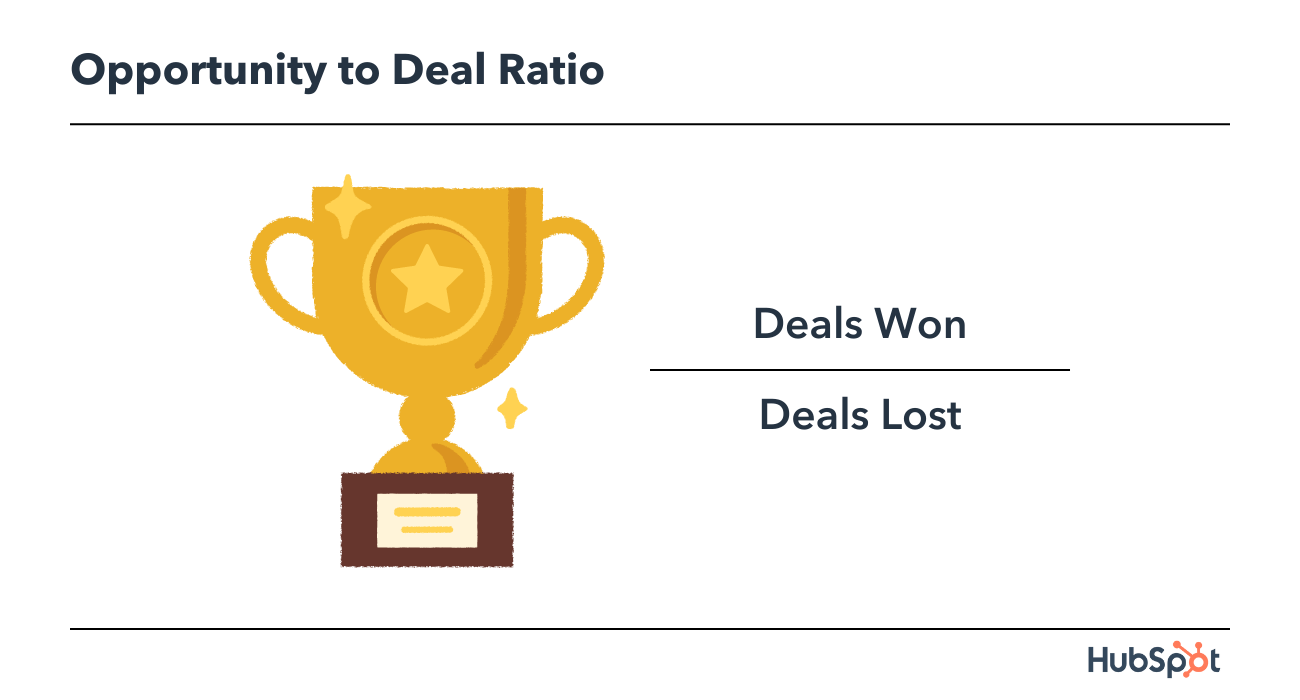
How to Improve Opportunity to Deal Ratio:
Dedicate a page on your website for users to book demos. Shortening the conversion path to the initial call can fast-track ideal prospects through the qualifying stages. Removing barriers in the early stages of the process takes the pressure off of closing the deal prematurely resulting in lost sales.
4. Call to Deal Ratio
For a complete picture of the efficiency of your sales process, take a look at the call to deal ratio. This metric measures the total number of calls your sales reps made to leads compared to how many of those initial calls became deals.
Don't be alarmed if this ratio is low — after all this is a comprehensive view of every lead compared to every deal and it may be the lowest ratio of the four we've covered so far.
How to Improve Call to Deal Ratio:
There's no quick fix for improving your call to deal ratio because this metric measures sales activities over a long period of time. To improve this metric, sit down with your sales and marketing leadership team to review goals, targets, and KPIs. These high-level metrics will help you refine your target audience and bring in better-qualified leads.
Pipeline Management Metrics
5. Pipeline Stage Conversions
Pipeline stage conversions are the points in your sales process where prospects are evaluated against criteria that determine whether they'd be a great fit as a customer.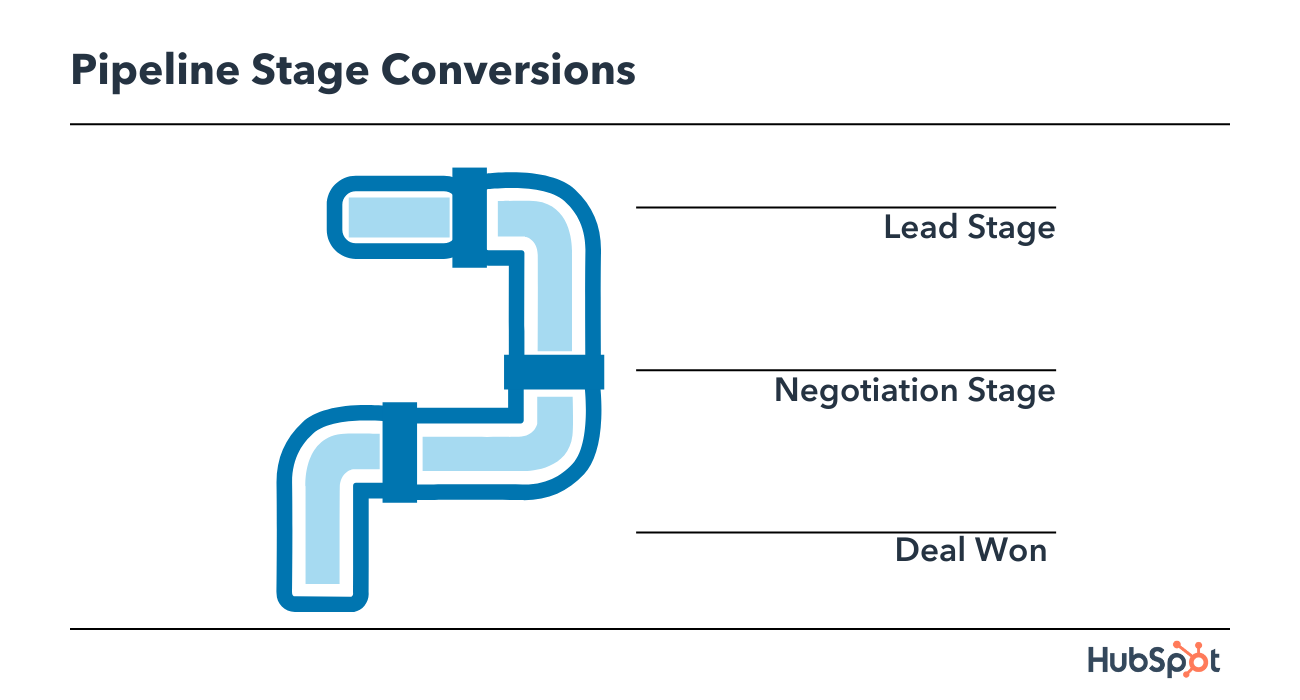
How to Improve Pipeline Stage Conversions:
By seeing how your opportunities are progressing through your pipeline and pinpointing the stages where you have considerable drop-off, you can know how and where to start addressing the health of your sales efforts.
6. Quarter to Quarter Pipeline Growth
Monitoring quarter to quarter pipeline growth lets you see how well your pipeline has been growing over time, allowing you to better gauge whether you're poised to meet your goals. It gives you a historical perspective that offers a picture of the opportunities you'll need to meet your quota and expand your sales efforts.
How to Improve Quarter to Quarter Pipeline Growth:
There is a two-pronged approach to growing your sales pipeline. The first step is to get your sales reps comfortable with prospecting some of their own leads. This approach puts the power of pipeline growth back into the hands of the sales team.
The second approach is to work in tandem with your marketing team to optimize demand generation efforts. This approach relies less on the sales team, but it can have a phenomenal impact on pipeline growth in addition to the leads that the sales team is already prospecting.
7. Inflow/Outflow of Opportunities
Your inflow and outflow of opportunities figures are the number of newly created opportunities in the pipeline compared to the number that left as won or lost deals. It can be used as a reference point to estimate how many deals you're likely to close.
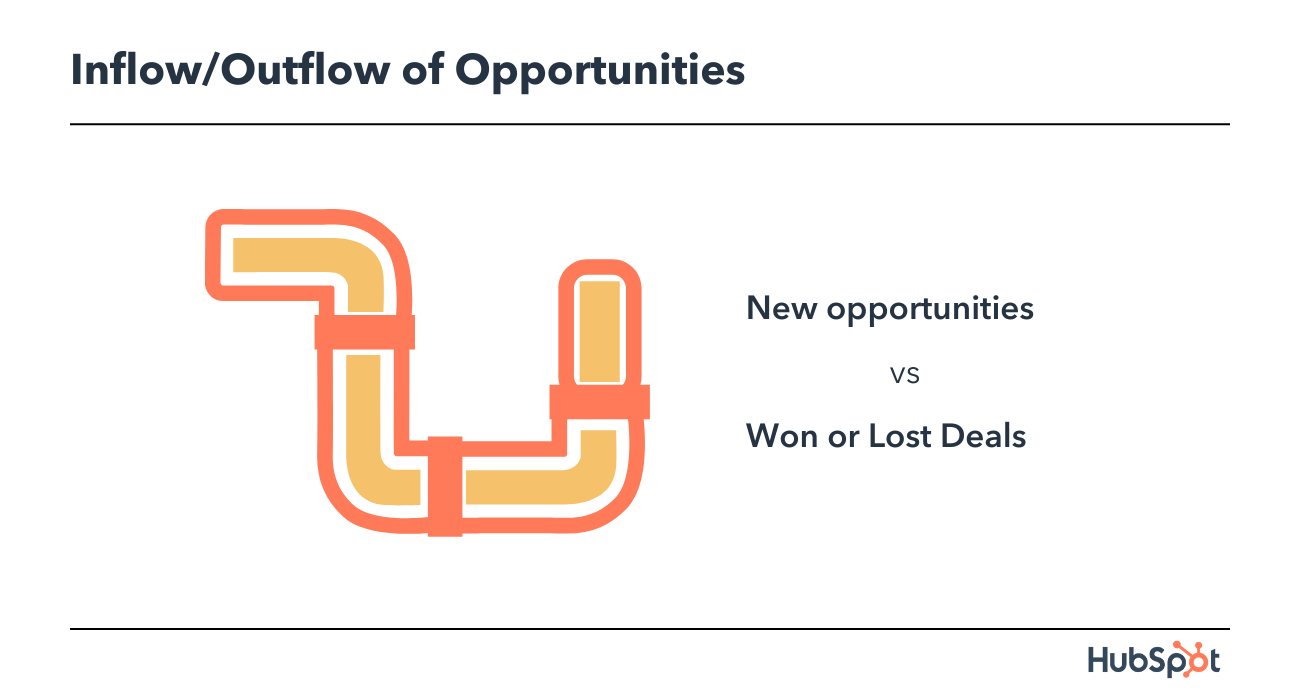
How to Improve the Inflow/Outflow of Opportunities:
Keeping tabs on how your pipeline is trending allows you to see whether your pipeline is growing or shrinking — your inflow and outflow figures can tell you why. It lets you ensure that your pipeline can replace the opportunities that you've won or lost, so you can stay on pace to reach your rising revenue goals.
8. Pipeline Coverage Ratio
Pipeline coverage is the ratio you use to measure how much open pipeline you have, relative to how much quota you need to close. Pipeline coverage is one of the better metrics for identifying which parts of the sales process reps need to focus on.
Strong pipeline coverage means they should be focusing their attention to activities further along the sales process, whereas weak pipeline coverage means reps need to work on its early stages — namely, generating more opportunities.
How to Improve Pipeline Coverage Ratio:
Once you have your pipeline coverage ratio, have your sales reps adjust their day-to-day workflow accordingly. For example, if you're noticing that you have weak pipeline coverage, have sales reps spend more time prospecting leads for a week or two. If your pipeline coverage ratio improves, you know that your prospecting goals for the next quarter should be higher to better support the pipeline.
9. Average Days per Sale for Won or Lost Opportunities
Tracking the length of your sales cycle with respect to won and lost opportunities can help you identify likely and high-risk buyers going forward. This kind of historical data can show how long prospects spend in specific stages before abandoning ship — giving you a picture of when an opportunity should be considered high-risk. It serves as a reference point for planning reps' schedules and prioritizing their time, so they don't get hung up on deals that won't close.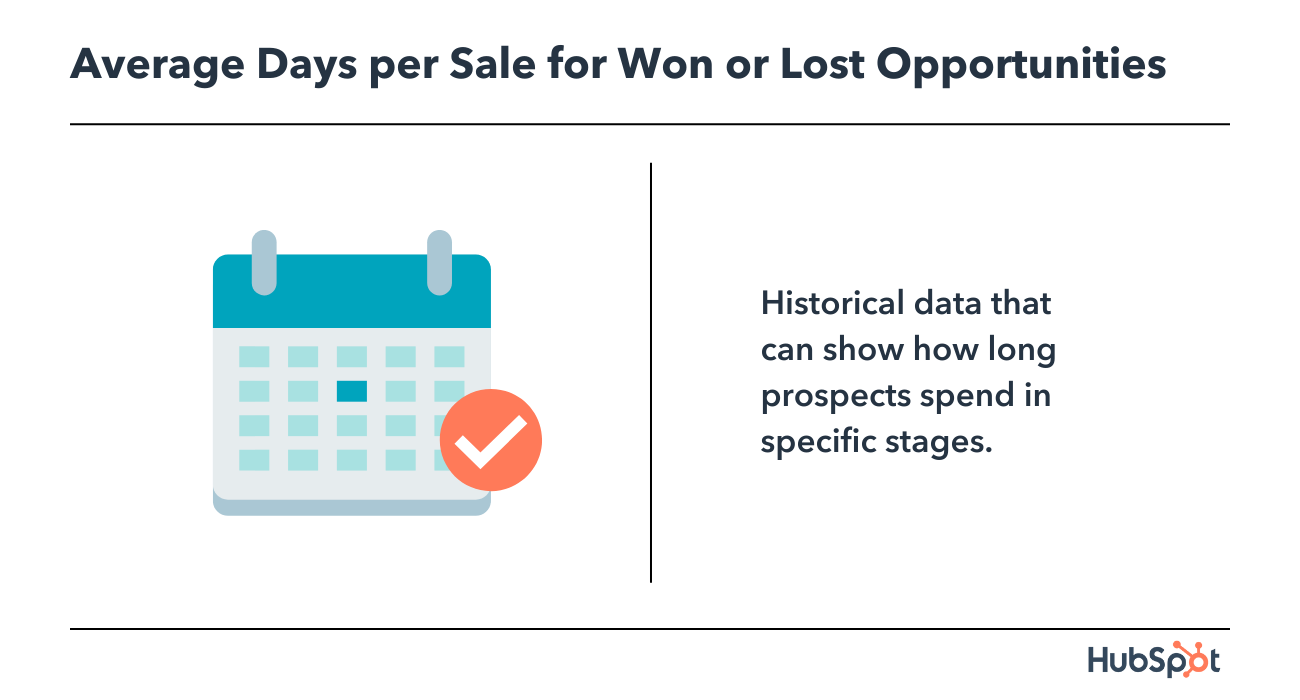
How to Improve Average Days Per Sale:
To keep your prospects engaged throughout the sales process, strike a balance between days where you reach out and days where you don't. Leaving too much time in between touch points can add unnecessary downtime throughout the deal while reaching out too often can scare your prospect away.
Sales Results Metrics
10. Quota Attainment
Quota attainment is one of the most straightforward inside sales metrics, and it's exactly what it sounds like — a measurement that tells you whether your reps have hit their quota in a given period. Setting quotas and measuring how well your reps have lived up to them is incredibly important in terms of evaluating their individual strengths, weaknesses, motivation, and overall fit for their positions.
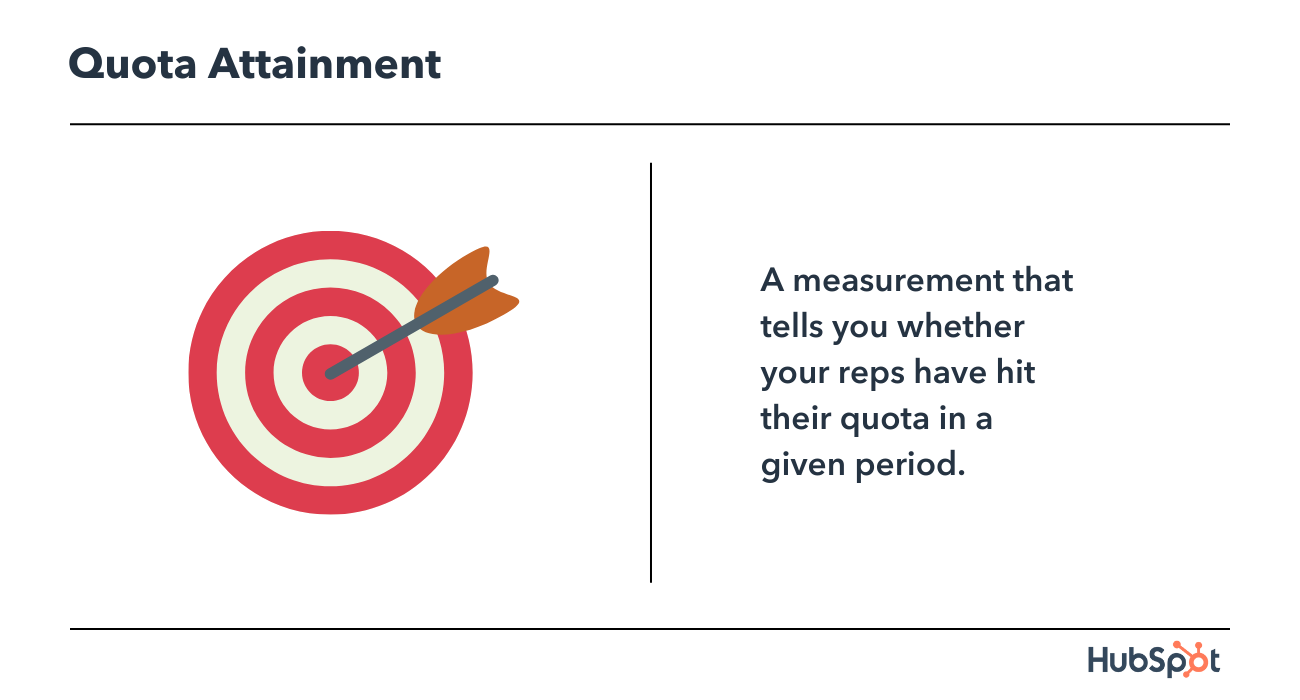
How to Improve Quota Attainment:
Review the sales enablement tools your reps have access to. Are they up to date? Do they have product information and talking points that prospects want to know? If not, work with the sales enablement team to improve these resources.
11. Quarter to Quarter Sales Growth vs. Pipeline Growth
Pitting your sales growth against your pipeline growth is a straightforward method for understanding the efficacy of your sales pipeline and process. If you find that your pipeline is growing but sales are stagnating, you need to take time to evaluate how and where you're losing the opportunities you're generating.
How to Improve Quarter to Quarter Sales Growth vs. Pipeline Growth:
To improve this metric in the short term, try going back to basics with your sales team. Find out how efficient they are with their calls and how the pipeline conversions are looking. If you see any major points where prospects are dropping out of the sales cycle, you can train reps to overcome common objections in that stage of the process.
12. Sales Cycle Length
Measuring the length of each reps' sales cycle shows you the average amount of time it takes each of your reps to move an opportunity from qualification to closing.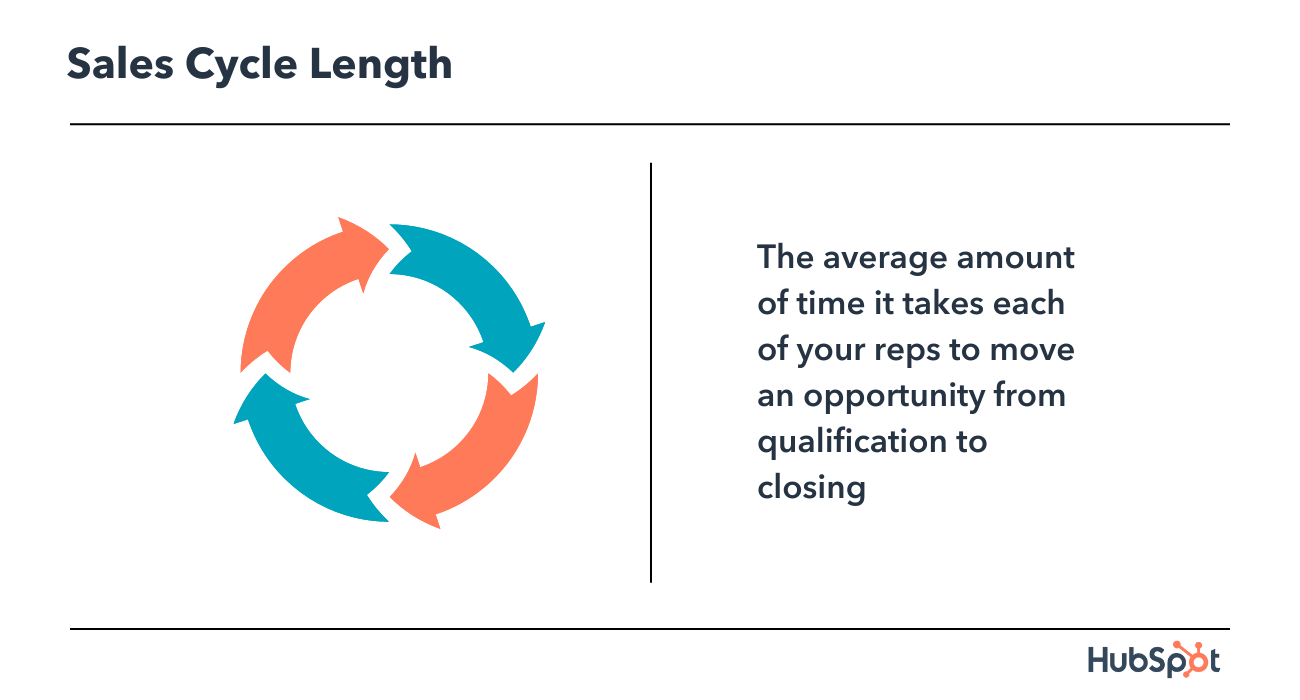
How to Improve the Sales Cycle Length:
It's in your best interest to track both your individual reps'sales cycles as well as your team's as a whole. This way, you can see which stages are holding up deals and evaluate your reps' performance based on how quickly they're able to close.
13. Average Deal Size
Measuring average deal size allows you to determine the health of your pipeline and the efficacy of your sales efforts. It's also a crucial metric for projecting revenue.
How to Improve Average Deal Size:
Understanding the customer's needs is key to growing the average deal size. You may be able to bundle products or services together that fit a customer's needs rather than upselling them soon after closing the first deal. You'll want to pay close attention to your market when trying to grow revenue in this way because you don't want to be seen as the company that oversells customers.
14. Forecast Accuracy
Forecast accuracy is a metric that gives you more perspective on how to plan for the future. By comparing your forecast against your actual results, you can hone in on the best ways to refine your predictions going forward. An accurate forecast is a must-have for any sales team.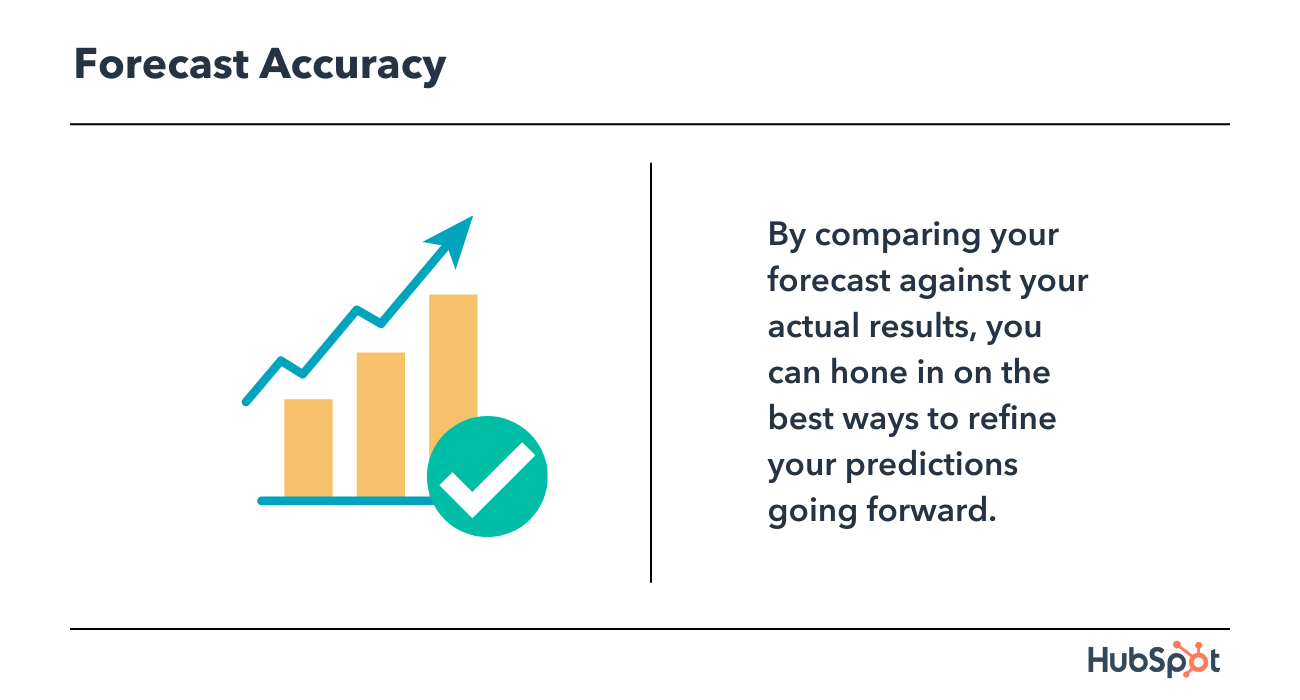
How to Improve Forecast Accuracy:
Surprisingly, forecasting isn't all about numbers. While they're the driving force in predicting future sales, they don't tell the full story. In addition to crunching numbers, take time to have 1:1 chats with each sales rep to get a sense of what they're experiencing on calls and during demos. They're hearing directly from budget-holders and that's the intangible data that numbers alone just can't provide.
Track the Most Important Sales Metrics This Quarter
This list isn't the be-all-end-all of inside sales metrics, but each one on it is worth tracking. You need to have a consistent pulse on how well your individual reps, overall team, and general sales process are working. Though there are always more metrics to consider, this list is one of the best places to start.
Editor's note: This post was originally published in May 2020 and has been updated for comprehensiveness.